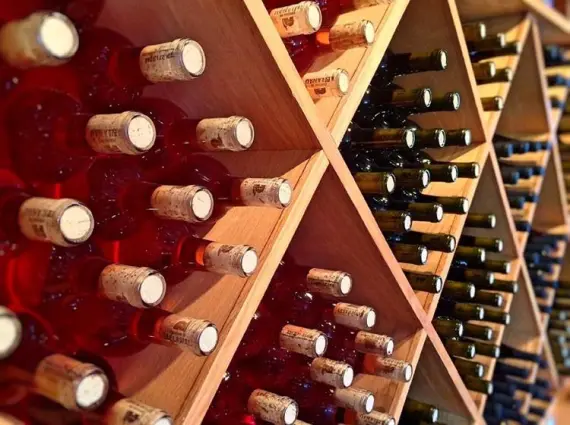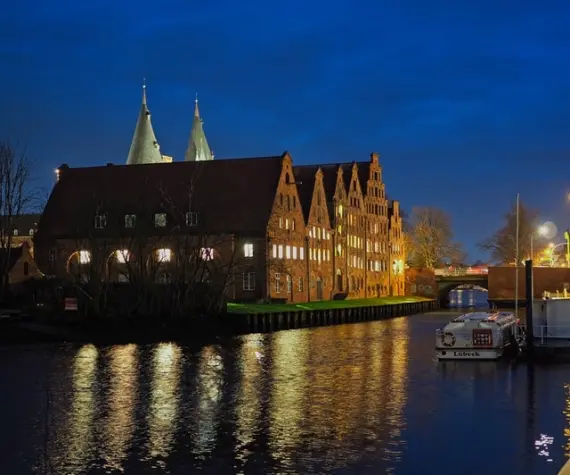Coach JASLO - LUBECK - find a connection and buy a ticket
JASLO

Jaslo is a city of more than 35,000 people in southeastern Poland's Subcarpathian province. It is located at the foot of the Carpathian Mountains at the confluence of three rivers: the Wisłoka, Ropa and Jasiolka. It is an excellent starting point for trips to the Beskid Niski and Magurski National Park or the Ciężkowice foothills. Its picturesque location, proximity to unspoiled nooks and crannies, but also interesting history and a multitude of attractions attract more and more tourists.
Jaslo - attractions to see in the city
While in Jaslo, you must see the Collegiate Church of the Assumption of the Blessed Virgin Mary, famous for its medieval paintings, as well as the Sroczynski Palace with its surrounding park. Also worth a visit is the sanctuary of St. Anthony, Jaslo's patron saint, with a statue of St. Anthony that survived war damage and a baroque painting "Stigmatization of St. Francis" from the turn of the 17th and 18th centuries.
An interesting geological site within the city are the Jaslo rocks, which are exposed complexes of sandstone, shale and limestone with exposed fish impressions. In addition, a few kilometers from Jaslo is Karpacka Troja, an open-air archaeological museum presenting one of the oldest settlements in Poland, dating back to the Bronze Age.
It is impossible to get bored in Jaslo. The city is the capital of Subcarpathian geocaching, and also offers 6 different scenarios for an urban tourist game, allowing you to visit Jaslo in an active and unconventional way, and at the end discover its mystery or reach its treasure.
Jaslo - how to get there
Two national roads run through the city: 28 and 73, as well as provincial road 992. In Jaslo is located a railroad station, which is the main junction in the south of the Subcarpathian province. Right next to it is a bus station. You can find a list of available bus connections to and from Jaslo on our website. If you are planning to visit the picturesque and idyllic Subcarpathian region, bus Jaslo will be a great choice.
Jaslo is a city of more than 35,000 people in southeastern Poland's Subcarpathian province. It is located at the foot of the Carpathian Mountains at the confluence of three rivers: the Wisłoka, Ropa and Jasiolka. It is an excellent starting point for trips to the Beskid Niski and Magurski National Park or the Ciężkowice foothills. Its picturesque location, proximity to unspoiled nooks and crannies, but also interesting history and a multitude of attractions attract more and more tourists.
Jaslo - attractions to see in the city
While in Jaslo, you must see the Collegiate Church of the Assumption of the Blessed Virgin Mary, famous for its medieval paintings, as well as the Sroczynski Palace with its surrounding park. Also worth a visit is the sanctuary of St. Anthony, Jaslo's patron saint, with a statue of St. Anthony that survived war damage and a baroque painting "Stigmatization of St. Francis" from the turn of the 17th and 18th centuries.
An interesting geological site within the city are the Jaslo rocks, which are exposed complexes of sandstone, shale and limestone with exposed fish impressions. In addition, a few kilometers from Jaslo is Karpacka Troja, an open-air archaeological museum presenting one of the oldest settlements in Poland, dating back to the Bronze Age.
It is impossible to get bored in Jaslo. The city is the capital of Subcarpathian geocaching, and also offers 6 different scenarios for an urban tourist game, allowing you to visit Jaslo in an active and unconventional way, and at the end discover its mystery or reach its treasure.
Jaslo - how to get there
Two national roads run through the city: 28 and 73, as well as provincial road 992. In Jaslo is located a railroad station, which is the main junction in the south of the Subcarpathian province. Right next to it is a bus station. You can find a list of available bus connections to and from Jaslo on our website. If you are planning to visit the picturesque and idyllic Subcarpathian region, bus Jaslo will be a great choice.
LUBECK

Lubeck is a close neighbor of Denmark. The city is located in the northern part of Germany, on the Trave River, just a few kilometers from its confluence with the Baltic Sea. Its attractive location makes Lubeck a key transportation and trade hub in the region, with convenient access to major German cities and neighboring Scandinavian countries. The city straddles an island that is surrounded by the waters of the Trave River, which gives Lubeck its distinctive charm and makes it unique in its urban context. The river, with its numerous canals and bridges, gives the city a unique appearance and contributes to its atmosphere. Along the river there are green areas that are ideal for walking and recreation.
Lubeck is known for its active port, which plays an important role in its economy. The port, although not as large as in the past, is still an important trading post, handling cargo and passenger traffic. The city is also an important industrial, commercial and educational center. Lübeck is home to various educational institutions, including universities and colleges, which attract students from all over the country and abroad.
Lubeck transportation - how to get to this city?
Transportation in Lubeck is very well developed, with a network of roads, railroads and public transportation that provide easy access to various parts of the city and surrounding areas. The city's proximity to major thoroughfares, such as highways and railroads, makes it easy to travel to other parts of Germany and neighboring countries. An excellent example of transportation to Lubeck are buses Sindbad, which leave from various parts of Poland and bring passengers to the stop at Haltestelle Beim Retteich at AOK next to ZOB. Take a look at our offer of buses to Lubeck!
Lubeck is a close neighbor of Denmark. The city is located in the northern part of Germany, on the Trave River, just a few kilometers from its confluence with the Baltic Sea. Its attractive location makes Lubeck a key transportation and trade hub in the region, with convenient access to major German cities and neighboring Scandinavian countries. The city straddles an island that is surrounded by the waters of the Trave River, which gives Lubeck its distinctive charm and makes it unique in its urban context. The river, with its numerous canals and bridges, gives the city a unique appearance and contributes to its atmosphere. Along the river there are green areas that are ideal for walking and recreation.
Lubeck is known for its active port, which plays an important role in its economy. The port, although not as large as in the past, is still an important trading post, handling cargo and passenger traffic. The city is also an important industrial, commercial and educational center. Lübeck is home to various educational institutions, including universities and colleges, which attract students from all over the country and abroad.
Lubeck transportation - how to get to this city?
Transportation in Lubeck is very well developed, with a network of roads, railroads and public transportation that provide easy access to various parts of the city and surrounding areas. The city's proximity to major thoroughfares, such as highways and railroads, makes it easy to travel to other parts of Germany and neighboring countries. An excellent example of transportation to Lubeck are buses Sindbad, which leave from various parts of Poland and bring passengers to the stop at Haltestelle Beim Retteich at AOK next to ZOB. Take a look at our offer of buses to Lubeck!
© 2025 Sindbad
Technical support, assistance, payments: Sindbad IT
© 2025 Sindbad
Technical support, assistance, payments: Sindbad IT
